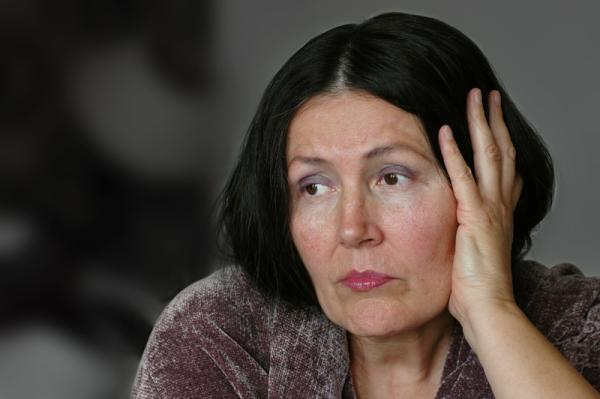Love is an emotional experience deeply rooted in human life, capable of bringing us unmatched joy and happiness, but when love is lost, whether through a breakup, divorce, or the death of a loved one, we find ourselves immersed in a challenging emotional journey known as grief. Throughout this process, people experience a series of phases that follow recognizable and universal patterns. Each stage has a purpose and function in our quest for emotional reconciliation and rebirth. By navigating these phases with patience and support we can move forward and find a new sense of fulfillment and happiness in our lives.
In this PsychologyFor article, we will explore in depth the phases of love mourning and their meaning Understanding the phases of grief and their meaning gives us greater insight into our own healing process.
1. Denial
Denial is the first phase of love mourning and is characterized by initial inability to accept the loss of love It is common that at this stage we find ourselves in a state of shock and refuse to believe that the relationship has come to an end. We feel like we are in a dream that we want to wake up from, hoping that everything is just a bad nightmare.
During denial, we may try to find alternative explanations or justifications for the situation, looking for any signs that allow us to deny reality. We can cling to the hope of reconciliation or ignore obvious signs that the relationship is over.
This denial phase is a form of emotional protection that allows us to assimilate the loss gradually. It is like a temporary barrier that allows us to adapt to the new reality progressively, since suddenly facing the reality of the breakup can be overwhelming.
2. Anger
The anger phase is an intense and challenging stage of grief. When denial begins to fade, repressed emotions, like anger, which is one of the most common emotional responses. During this phase, we feel deeply hurt and experience an overwhelming sense of injustice.
Anger can manifest itself in various ways. It can be directed towards the loved one, towards oneself or towards any other person or circumstance related to the loss. We find ourselves in a volatile emotional state and we may feel irritable, resentful or full of rage, even experiencing desires for revenge or harming others.
Allowing ourselves to feel and express anger in healthy ways can be part of the healing process. To do this, it is crucial to find constructive ways to channel and manage anger, avoiding harmful actions or words towards ourselves or others. Seeking emotional support from friends, family, or mental health professionals can help us explore our emotions, process grief, and find healthy strategies to manage anger.
3. Negotiation
The negotiation phase is a stage in which we actively seek solutions and answers to help us recover what was lost in love mourning. During this phase, we are in a state of reflection and explore different scenarios in hopes of finding a way to reverse the loss or change the course of events.
At this stage, it is usual for us to become promises or commitments to ourselves or to the person we love. Likewise, we wonder what we could have done differently and whether there is still a chance for reconciliation, and we feel an urgency to find a way out or a solution to avoid the painful reality of loss.
On the other hand, negotiation can be a defense mechanism that helps us deal with pain and uncertainty, gives us the feeling of having some control over the situation and gives us a space to process our emotions in a more manageable way. Accepting that it is something irremediable can be painful, but it is a necessary step to move forward to the next phase of loving grief.
4. Sadne
After anger and negotiation, it is common for us to experience deep sadness that accompanies us constantly. It’s about a time of introspection and reflection on shared memories and the happy moments that are now missed.
In other words, in this phase we face the reality of the loss and experience a overwhelming feeling of emptiness, hopelessness and pain. We may experience loss of interest in activities we previously enjoyed, changes in sleep patterns, lack of energy, and difficulty concentrating frequent crying, feelings of loneliness and a general feeling of regret.
In any case, It is important to allow ourselves to feel and express sadness in a healthy way. Crying, talking to loved ones, or seeking professional support are valuable ways to process our emotions and ease the emotional weight we carry. Sadness is a natural part of the grieving process and we need to allow ourselves to live and go through it.
5. Acceptance
The acceptance phase is the turning point in the loving grieving process. After going through denial, anger, bargaining, and sadness, we begin to reach a place of acceptance of the reality of the loss and our new situation without the loved one. Although we may still experience sadness and homesickness, we become better able to face the situation with serenity.
At this stage we can also begin to find a sense of inner peace and reconciliation. We accept our emotions and allow them to flow instead of resisting them. Acceptance gives us a sense of liberation and allows us to move forward into a future without the constant emotional burden of loss. Although moments of sadness may still arise, we have integrated the experience into our lives and have grown stronger through the grieving process.
Acceptance does not necessarily mean that we forget or stop loving the person we lost, but rather that we learn to live with the absence and move on with our lives and open ourselves to new possibilities for personal growth and building healthy relationships. Remember that grief is an individual and unique process that each person experiences uniquely. Here you will find more information about How to get over a breakup.
This article is merely informative, at PsychologyFor we do not have the power to make a diagnosis or recommend a treatment. We invite you to go to a psychologist to treat your particular case.
If you want to read more articles similar to The phases of love mourning and their meaning we recommend that you enter our Feelings category.
Bibliography
- De La Rubia, JM, and Ávila, MM (2015). Empirical contrast of the Kübler-Ross five-phase model of grief in women with cancer. Psychological Thinking, 13(1). https://doi.org/10.11144/javerianacali.ppsi13-1.cemc
- Gómez, JM, Cano, M., Cantillo, MLS, and Suárez, YB (2021). Loving Grief, Emotional Dependency and Mental Health in women who have ended a relationship. Psychological reports, twenty-one(1), 101-116. https://doi.org/10.18566/infpsic.v21n1a07













